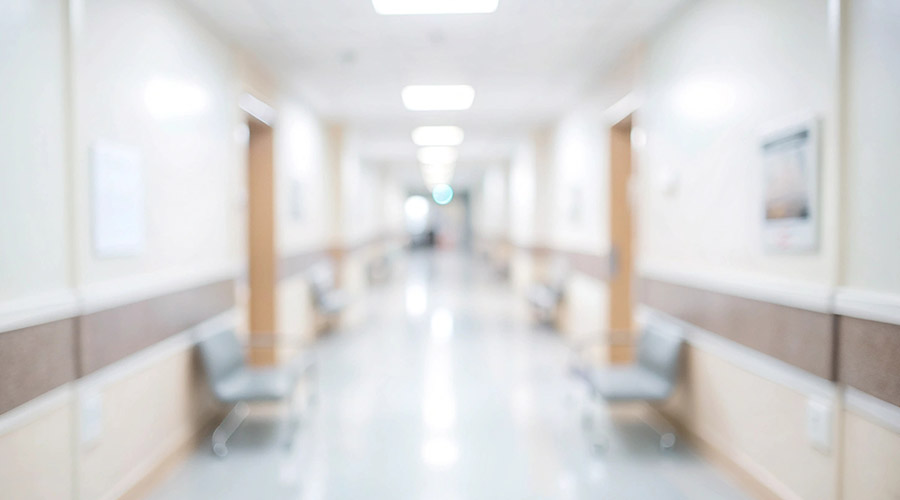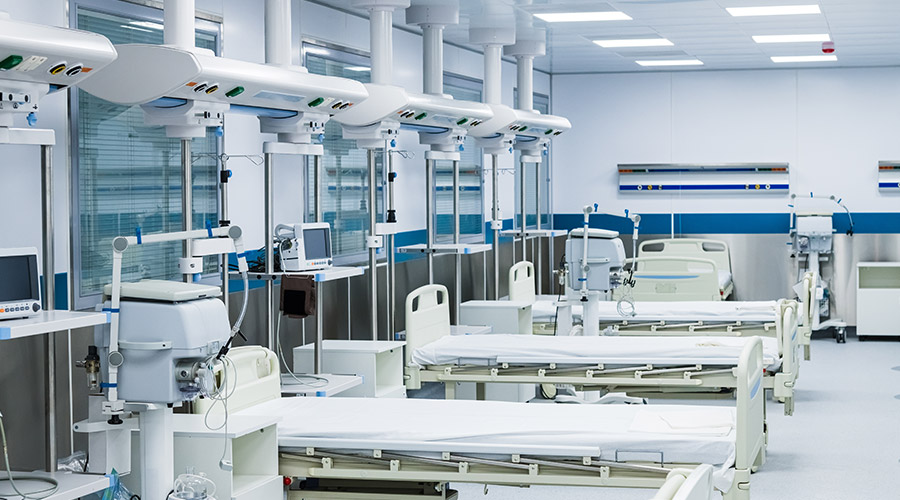Outpatient clinics are providing more healthcare services to patients than ever before, including specialty medical procedures previously only available in a hospital setting. On the forefront of this growing trend is the new Scripps Clinic John R. Anderson V Medical Pavilion. Located at the entrance to the Scripps Memorial Hospital La Jolla Campus in La Jolla, California, the facility opened on June 1.
“There are two primary reasons services are moving beyond hospital walls,” says Michael McLane, director of practice management for Taylor Design, the architecture firm who provided building program, site study and design services for the new Scripps’ clinic. “The most obvious reason is the costs associated with construction, permitting and licensing. In today’s market, the cost to build a hospital can often be 50 to 70 percent higher than that of an outpatient facility.” This cost premium is mainly attributed to increased building code regulations for hospitals related to structural design, fire life safety and mechanical requirements.
“The second reason for this growing trend,” adds McLane, “is that healthcare functions performed outside of the hospital help organizations better control costs by freeing up valuable building real estate within the hospital, making more room for acute-facility functions and departments.”
In addition to reducing the cost of patient care, moving as many functions as physically safe and practical to an outpatient facility makes services more plentiful and convenient for patients and hospital staff.
“It’s much easier to make appointments in an outpatient center than a hospital, and these facilities are often more accessible than a hospital for patients and medical professionals,” says McLane. “Physicians also benefit from conducting more procedures in the same location as their office space. This reduces travel time and allows them to teleconference and share medical records with other physicians more expediently.”
Increased medical services enhance patient care
Completed in March 2016, the new John R. Anderson V Medical Pavilion was a joint collaboration between the design-build team of Taylor Design and McCarthy Building Companies, Inc. Designed as an all-in-one, multi-functional ambulatory healthcare facility and physicians’ services center, the progressive facility combines collaborative and efficient space for healthcare professionals with comprehensive medical services to enhance patient care.
In addition to providing patients with 17 medical and surgical specialties, the new 175,000-square-foot pavilion is only the second medical office setting in California featuring highly advanced cardiac catheterization labs for heart procedures, such as stents or pacemaker implants. Scripps was able to add this service as a result of special California legislation (AB 491), which Scripps and Cedars-Sinai Medical Center in Los Angeles helped pass in 2012. Previously, the California Building Code only allowed these types of cardiac procedures to be conducted within a hospital.
“Since the code has been amended to allow the function to occur inside medical office buildings connected to a hospital, the operational requirements and supporting functions fall under review of the Office of Statewide Health Planning and Development (OSHPD),” says McLane. This meant there were two governing authorities for this part of the building: OSHPD and the City of San Diego. “The cardiac catheterization lab on the second floor was designed to OSHPD 3 building code requirements, while the floors above were designed to conventional medical office building code requirements,” he adds.
Sky bridges enable critical patient & physician circulation
An instrumental design component making these cardiac procedures possible in an outpatient building is a pedestrian bridge that links the second-level catheterization labs in the medical pavilion with the adjacent Prebys Cardiovascular Institute. The bridge not only enables immediate transport of patients from the pavilion to the acute care facility if deemed necessary, but it also gives physicians the ability to easily move back and forth between the two buildings.
“By linking the two facilities, the second floor of the medical pavilion is considered a licensed outpatient department of the Prebys Cardiovascular Institute next door,” says Brett Ringler, senior director of clinical operations at Scripps Clinic.
Another sky bridge between the pavilion’s fourth-floor cardiology department and the Intensive Care Unit (ICU) of the Prebys Cardiovascular Institute further streamlines physician access between the two structures. “This was an important feature for the physicians involved with other patient services on the fourth level,” says Ringler.
Additionally, a large conference room on the fourth floor incorporates an oversized LCD monitor enabling doctors, residents and interns in Scripps’ Graduate Medical Education (GME) program to observe surgical procedures in the cardiac catheterization labs. Physicians and medical students anywhere in the world can also view procedures broadcast via satellite truck from a permanent video link station built on the side of the building.
Supporting comprehensive patient care
“The cardiac catheterization labs are only one example of increased medical services in an outpatient setting that we’ve incorporated into our new medical pavilion,” says Ringler. “There are many others, such as the neurosurgery procedure suite on the fifth floor.”
Nationally renowned for its cardiology care, Scripps Health incorporated a number of specialties into the new pavilion that directly support cardiovascular health. These include cardiology, gastroenterology, pulmonology, neurology, nephrology, endocrinology, as well as general, vascular and neurosurgery. The seven-level outpatient tower also houses office and administration space, diagnostic facilities and roughly 15 medical procedure departments.
In addition, the building contains medical imaging services, such as CT, MRI, fluoroscopy, general radiology, ultrasound and nuclear medicine on the service level, as well as general surgery and four gastroenterology labs with special procedure rooms on the first floor. Tunnels conveniently link the service level to the main hospital and the Prebys Cardiovascular Institute.
Collaborative delivery and technology streamline complex construction
“Incorporating advanced services in an outpatient facility requires additional mechanical, electrical and plumbing, as well as other building components that make construction of these facilities more complex than a conventional medical office building,” says McLane. “Nevertheless, we can still can build them faster than a hospital, especially with the technology and collaborative delivery methods available today.”
Using a hybrid of design-build and design-assist delivery, the design and construction team at Scripps worked closely with the trade subcontractors early in the design process to meet the project’s aggressive 24-month timeline. Virtual design and construction technology was also implemented by McCarthy and its trade partners to expedite progress of the project’s complex building elements and to ensure quality installation with no rework. This technology helped the building team anticipate and reduce potential constructability challenges before construction began.
Engaging the end-user for optimal results
During the program phase, the design team worked closely with Scripps Health physicians, nurses and clinical staff to understand departmental and workflow relationships in order to create a design mindful of their operational needs, while at the same time respecting Scripps’ guiding principles for the project.
Ringler says that engaging the physicians and their leadership partnered with key non-physician staff across all departments early in the project’s design and construction phases played an important role in ensuring the design met the clinic’s needs, especially for surgical and other specialized departments.
“Several key division leaders and I spent numerous hours with Taylor Design setting up every single component in the catheterization labs, neurosurgery suite and GI labs,” continues Ringler. “The point being, the unique part of this project was that it was designed by the people using it. Generally, you end up with some of the best results that way.”
Joe Lowe, AIA, LEED AP, DBIA is Director of Taylor Design’s San Diego office.

 3 Employees Injured by Patient at Halifax Infirmary's Emergency Department
3 Employees Injured by Patient at Halifax Infirmary's Emergency Department How Architects Shape the Future of Healthcare Facilities
How Architects Shape the Future of Healthcare Facilities UNC Health, Duke Health Form Partnership for Stand-alone Children's Hospital
UNC Health, Duke Health Form Partnership for Stand-alone Children's Hospital Sarasota Memorial Hospital Plans to Build New Facility in North Port
Sarasota Memorial Hospital Plans to Build New Facility in North Port CMMS, Data and the Path to Compliance
CMMS, Data and the Path to Compliance